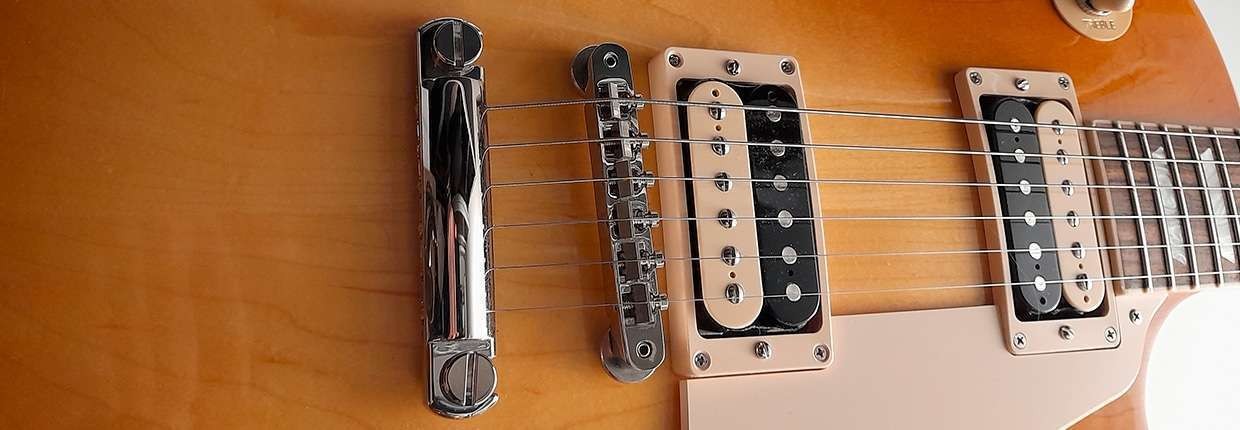Recording, Mixing and Mastering
Published on 28/06/2022

The guitar plays many roles within modern music ranging from absolute star in rock to rhythm and harmonic base in pop as well as jazz. In this post we shall get into guitar recording techniques.
The main aspect to think about is that the sound of an electric guitar derives from the sum of many factors (instruments, pedals and effects, amp head and speakers) and, from the tracking point of view, the degrees of freedom are several.
Let’s see hot to proceed aiming to reproduce at our best what we directly listed from the guitar cabinet.
A good recording starts from a set of instruments and tools in perfect conditions. With guitars following aspects are to be taken into account:
The guitarist's work ends with the sound that comes out from the guitar speaker. The rest is Sound Engineer’s responsibility.
The electric guitar is often tracked with a combination of microphones. Each of them is meant for a specific purpose and the final sound derives from the combination of the single sounds.
The most used microphones are:
Many other mic models can be used. The choice depends on the goal and the specific way of working. We are about to talk about this in the next paragraphs.
The sound we listen from the speaker cabinet depends on a combination of factors. The speaker sound, the speaker position in the room, the listener’s position in the room, the environment reflections of the sound.
As always happens when we deal with the human hearing system, the result is also coming from the brain processing of the received stimulus (well, things are a little more complicated but you have got the idea).
The microphones by themselves are not capable of such processing and we have to use them following the criteria that have been developed in decades of working in recording studios.
As you can imagine, simply putting a good mic close to our head won’t be enough.
In the following video (by Neumann) some basic concepts are given:
The position of the mic to the speaker is an important factor. If the capsule is close to the center of the cone the sound gets treble rich, while moving toward the speaker’s edge, the treble attenuates and the response is uniform.
The distance between the capsule and the speaker influences the bass response. The closer the mic is, the heavier the bass frequency is (also because of the proximity effect).
The following video (by Neumann) gives some examples.
Often the multi-mic approach is used to combine the different mic features to get to the final sound. Also in this case we have a video from the Neumann channel helping us.
Sometimes a combination of a dynamic and a ribbon mic is used because the resulting sound is pleasing and close to the direct listening.
When using multiple mics the distances have to be chosen to avoid phasing issues (comb filtering). The rule is to use symmetric configurations and have the capsule at the same distance from the speaker grille.
Until now we have been working close to the source. It can be useful, sometimes, to account also for the room sound to give a listening experience closer to reality.
In this case the engineer can use room mics placed in a way that helps the room contribution to be close to the real one. Several positions need to be checked before reaching the result.
To avoid comb filtering with room mics the distance from the proximity mics and the room mic must be greater than three times the distance between the proximity mics.
For this application condenser mics are preferred over dynamic ones. They are eventually used in stereo pairs.
The Mid-Side technique is well suited for this application since it allows the right amount of ambient sound over the direct one to be fine tuned.
To record an electric guitar, even if its band goes from 80Hz to 7KHz, it is not an easy task.
A lot of work has been done to achieve good results and this post is just a compendium of the best practices.
Doung in that way you will get good results for sure. As always happens when dealing with music and arts, experimenting is always a good option. Talk to you soon!
Join us today and get 5% off your next order!

Empty cart